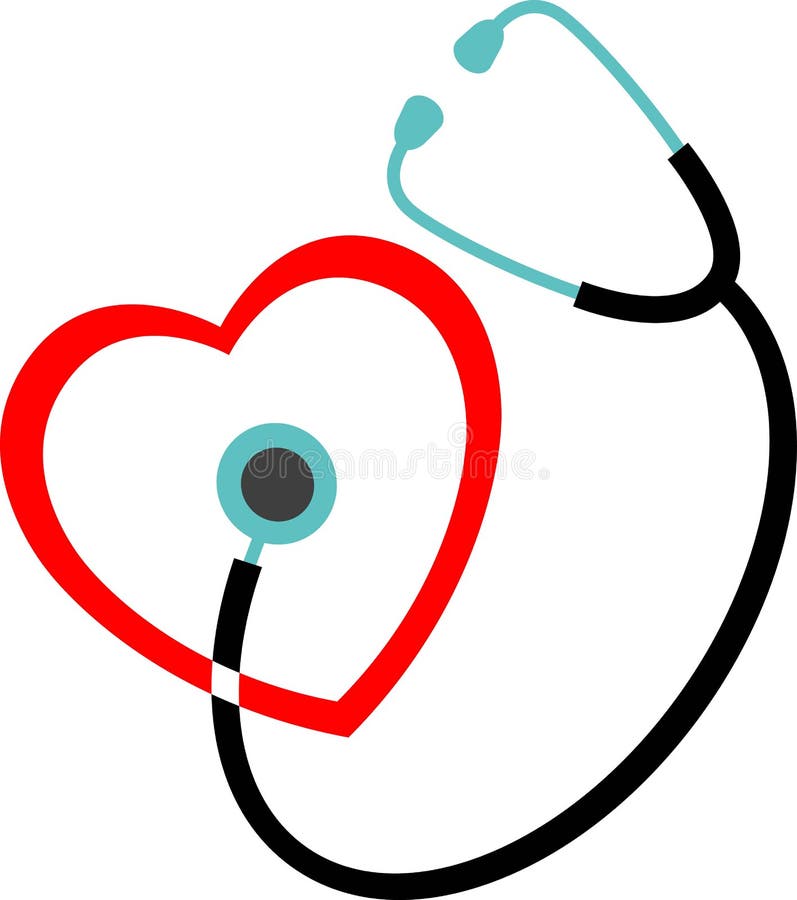The essential guide to understanding Cardiology for long-term wellness
Wiki Article
Understanding the Value of Cardiology in Modern Medical Care Providers
Cardiology plays a critical function in modern-day health care, especially as heart disease remains to be the leading cause of death worldwide. Developments in diagnostics and therapy have changed client care, allowing earlier interventions and boosted outcomes. Furthermore, the shift towards precautionary cardiology encourages individuals to manage their health and wellness proactively. As innovation remains to develop, the combination of cutting-edge solutions may even more redefine cardiology's effect on public health and wellness, motivating a more detailed examination of arising fads and their effects.The Prevalence of Heart Problem and Its Effect on Public Health
Although heart problem continues to be the leading cause of fatality worldwide, its effect extends far past private clients to impact public wellness systems and economic situations. The high frequency of heart illness puts a substantial stress on medical care sources, necessitating raised financing for rehab, prevention, and treatment programs. Public health initiatives should resolve danger factors such as obesity, cigarette smoking, and inactive way of lives, which contribute considerably to the rising occurrence of heart conditions.Moreover, the financial problem linked with heart problem is immense, incorporating not only straight medical prices yet also indirect expenditures related to shed performance and early death. Areas encounter obstacles in handling these expenses, usually leading to differences in healthcare accessibility and outcomes. As the populace ages and lifestyle-related threats proceed to intensify, the urgency for effective cardiology interventions becomes critical. Addressing heart illness is not just an issue of specific wellness yet likewise an essential public health top priority.Advances in Heart Diagnostics and Imaging Techniques
Current innovations in heart diagnostics and imaging techniques have transformed the field of cardiology, enhancing the ability to spot and monitor cardiovascular disease. Methods such as cardiac MRI, CT angiography, and echocardiography have come to be significantly advanced, offering comprehensive pictures of heart structures and functions. These modalities permit the early identification of problems like coronary artery illness, heart failure, and valvular disorders.Moreover, developments in non-invasive diagnostics, such as wearable technology and remote tracking gadgets, have actually equipped clients and healthcare service providers. These tools facilitate real-time tracking of heart rhythms and various other necessary indications, resulting in prompt interventions. Additionally, fabricated knowledge is being integrated into imaging evaluation, improving precision and efficiency in medical diagnosis.Technologies in Treatment Alternatives for Heart Conditions
Current improvements in cardiology have led to substantial developments in therapy options for heart disease. These consist of advanced medical techniques that improve procedural results and arising medications that provide new opportunities for therapy. As the field progresses, these innovations play a vital function in boosting client treatment and outcomes.Advanced Surgical Techniques
Developments in medical strategies have transformed the landscape of cardiology, using brand-new hope for clients with heart disease. Minimally intrusive procedures, such as catheter-based interventions, have substantially reduced healing times and hospital stays. Methods like robotic-assisted surgical treatment boost precision, permitting surgeons to navigate complex anatomical structures with higher precision. In addition, improvements in imaging modern technology facilitate real-time visualization during procedures, improving outcomes. Transcatheter aortic shutoff substitute (TAVR) exhibits a breakthrough in dealing with aortic stenosis, making it possible for shutoff replacement without open-heart surgery. Furthermore, hybrid techniques that combine surgical and catheter-based methods provide tailored remedies for numerous heart problems. These advanced surgical strategies not just improve client safety but additionally expand therapy alternatives, underscoring the crucial role of advancement in contemporary cardiology practices.Emerging Treatments and medicines
As the landscape of cardiology remains to evolve, emerging therapies and medications play a crucial function in enhancing therapy choices for heart problems. Innovations such as novel anticoagulants and progressed lipid-lowering agents have actually transformed the monitoring of heart diseases, significantly reducing person morbidity and mortality. In addition, the advancement of gene treatments and regenerative medication uses promising methods for treating problems previously regarded irreversible. Professional tests are continually disclosing the efficacy of these treatments, pushing the limits of traditional treatments. The assimilation of digital health and wellness technologies assists in personalized medicine, enabling for customized therapy plans based on genetic and way of life elements. Jointly, these advancements highlight the vibrant nature of cardiology, boosting patient outcomes and redefining requirements of treatment in modern healthcare.The Function of Preventive Cardiology in Person Treatment
Precautionary cardiology plays a crucial function in individual treatment by focusing on the identification of risk elements that add to cardiovascular disease. Via lifestyle adjustment methods and very early discovery strategies, medical care providers can efficiently minimize the incidence of cardiovascular events - Cardiology. This aggressive strategy not just improves patient outcomes but also advertises lasting health and wellnessDanger Aspect Recognition
While heart diseases remain a leading reason for morbidity and death worldwide, reliable threat aspect identification works as a cornerstone of preventative cardiology. Recognizing danger elements such as hypertension, family members, diabetic issues, and hyperlipidemia history is necessary for very early intervention. Healthcare professionals make use of different screening methods to evaluate these variables, permitting for customized safety nets. In addition, comprehending a patient's way of living options, such as smoking and physical lack of exercise, even more educates risk analyses. This complete assessment makes it possible for clinicians to develop personalized treatment strategies focused on mitigating threats. By prioritizing threat variable identification, medical care systems can enhance person results and reduce the general burden of heart diseases, ultimately contributing to boosted public health and wellness approaches and resource appropriation.Lifestyle Adjustment Strategies
A wide range of researches highlights the critical function of way of life alteration strategies in decreasing heart disease risk. These methods incorporate nutritional changes, enhanced physical activity, cigarette smoking cessation, and weight monitoring. By adopting a heart-healthy diet rich in fruits, vegetables, whole grains, and lean proteins, individuals can reduce cholesterol levels and blood pressure. Routine physical activity enhances the heart and enhances general cardiovascular wellness. Furthermore, quitting smoking considerably lowers the risk of cardiovascular disease and boosts recuperation rates for those with present conditions. Weight administration additionally adds to cardio health by reducing other risk factors such as diabetes and hypertension. Implementing these way of living transforms not only advertises individual wellness however likewise works as a cornerstone of preventive cardiology in individual care.Early Discovery Strategies
Way of living alterations considerably add to lowering heart disease risks, yet they are most reliable when matched with early discovery methods. Preventative cardiology highlights the importance of identifying possible heart problems prior to they intensify into significant problems. Methods such as blood pressure surveillance, cholesterol testing, and advanced imaging technologies like echocardiograms play crucial functions in assessing cardiovascular health. Biomarkers and hereditary testing additionally enhance the accuracy of early discovery, enabling customized preventive approaches. Routine heart risk analyses empower doctor to step in proactively, potentially avoiding cardiac arrest and strokes (Cardiology Jupiter). By incorporating these early detection approaches into regular care, people can take advantage of timely way of living interventions and targeted treatments, eventually improving end results and improving top quality of lifeIntegrating Technology Into Cardiology Practices
As improvements in modern technology continue to improve numerous areas, the combination of cutting-edge tools and systems into cardiology methods has come to be necessary for boosting person treatment and outcomes. Telemedicine platforms permit cardiologists to keep track of individuals from another location, improving accessibility to care while reducing the burden on health care facilities. Wearable tools, such as smartwatches, allow continual heart price surveillance, alerting both patients and physicians to potential issues in real-time. Additionally, synthetic intelligence (AI) is being utilized to evaluate large amounts of cardiac information, assisting in very early medical diagnosis and tailored therapy strategies. Advanced imaging methods, including 3D echocardiography, enhance visualization of heart structures, leading to more precise treatments. Digital health and wellness records (EHRs) streamline patient details management, guaranteeing that cardiologists have immediate accessibility to crucial information. With each other, these technological advancements are changing cardiology, promoting proactive monitoring and enhanced health outcomes for people with cardiovascular conditions.The Significance of Patient Education And Learning and Engagement
Individual education and interaction play a pivotal duty in the administration of cardio health and wellness. By outfitting clients with expertise about their problems, treatment choices, and way of living changes, healthcare service providers equip people to take an active function in their treatment. This proactive technique see this here can bring about improved adherence to suggested medications, dietary modifications, and workout regimens, eventually lowering the risk of complications.Engagement likewise cultivates a strong patient-provider relationship, motivating open interaction and Read More Here trust. When clients feel notified and entailed, they are most likely to voice issues and ask inquiries, which can lead to better scientific results. In addition, instructional resources, such as workshops or electronic platforms, can enhance understanding and promote self-management methods. Overall, prioritizing person education and learning and interaction is necessary for enhancing cardio health and wellness, enhancing lifestyle, and lowering medical care prices related to cardio conditions.Future Fads in Cardiology and Their Possible Influence

Frequently Asked Questions
What Way Of Living Adjustments Can Minimize Cardiovascular Disease Danger?
The current inquiry addresses way of living modifications that can considerably decrease heart problem threat. Dr Garcia. Taking on a well balanced diet, involving in normal physical activity, maintaining a healthy and balanced weight, handling tension, and avoiding cigarette can notably improve cardio healthJust How Can I Acknowledge Early Indicators of Heart Issues?
Recognizing very early signs of heart navigate to these guys troubles involves surveillance signs such as chest discomfort, shortness of breath, tiredness, and irregular heart beat. Timely recognition of these indicators can trigger needed medical analysis and treatment for far better end results.What Are the Differences In Between Cardiologists and Cardiac Surgeons?
The distinctions between cardiologists and cardiac cosmetic surgeons depend on their functions; cardiologists mostly diagnose and handle heart problems through non-invasive techniques, while heart cosmetic surgeons execute procedures to correct structural heart problems. Each plays a crucial, distinct role.
Exactly how Commonly Should I Get My Heart Health Checked?
The frequency of heart wellness checks differs based on individual threat variables. Normally, adults should undertake examinations every one to 2 years, while those with status quo might call for more frequent analyses as recommended by healthcare specialists.What Function Does Genetics Play in Heart Problem Danger?
Genetics significantly affects heart problem risk, with domestic patterns suggesting acquired conditions. Specific genetics can predispose people to high blood pressure, cholesterol issues, and various other cardiovascular troubles, highlighting the significance of hereditary screening in evaluating heart health and wellness. Heart disease stays the leading cause of fatality internationally, its influence prolongs much beyond specific patients to impact public health systems and economic situations. Public health efforts must resolve threat variables such as excessive weight, cigarette smoking, and less active lifestyles, which add greatly to the increasing occurrence of heart conditions.Moreover, the economic concern linked with heart disease is tremendous, including not just straight medical costs however additionally indirect expenses associated to shed performance and premature mortality. Precautionary cardiology plays a vital duty in patient care by focusing on the identification of danger variables that contribute to heart disease. Man-made knowledge (AI) and equipment learning are boosting diagnostics and person monitoring, enabling early detection of heart illness. The differences between cardiologists and heart specialists exist in their duties; cardiologists largely diagnose and handle heart problems via non-invasive approaches, while heart doctors execute medical treatments to correct structural heart problems.Report this wiki page